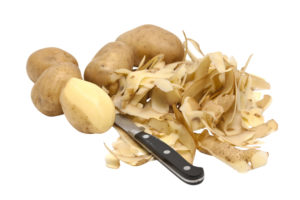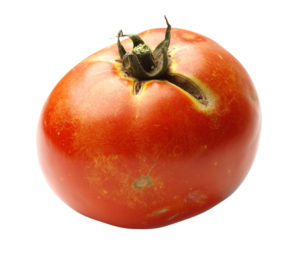Turning Scraps and Ugly Produce into Culinary Treasures
 Over 3.2 trillion pounds of food goes to waste each year, with the average European and North American shopper tossing over 200 pounds each, according to the Food and Agriculture Organization of the United Nations. That adds up to nearly one-third of the total amount of food produced around the globe. But as consumers look to make eating and purchasing decisions that are better for the earth, the reduction of food waste is getting a lot more attention. As a result, things like vegetable scraps, “ugly” fruit and previously unloved cuts of meat are being turned into new culinary gems.
Over 3.2 trillion pounds of food goes to waste each year, with the average European and North American shopper tossing over 200 pounds each, according to the Food and Agriculture Organization of the United Nations. That adds up to nearly one-third of the total amount of food produced around the globe. But as consumers look to make eating and purchasing decisions that are better for the earth, the reduction of food waste is getting a lot more attention. As a result, things like vegetable scraps, “ugly” fruit and previously unloved cuts of meat are being turned into new culinary gems.
Like many culinary trends, the move to reduce food waste gained much of its popularity thanks to innovative chefs in the restaurant space who have begun using previously discarded food scraps to create whole new offerings. For example, some chefs are replacing the classic (yet rarely eaten) parsley sprig or radish ribbon with garnishes like pickled watermelon rinds and gremolata made from carrot top greens.
In a 2016 “Taste the Waste Food Challenge,” the Colorado Restaurant Association and Denver Department of Environmental Health teamed up to encourage chefs from the United States to push the creativity even further—creating whole dishes made from at least 50 percent scraps or other waste they would normally toss out. The grand prize winner was an apple cobbler made with avocado-pit streusel, salted apple core caramel, with potato and apple skin pastry.
Home cooks are also getting in on the action—using lesser known cuts of meat like beef shank and pork sirloin, and repurposing cauliflower stems to make “steaks” and “rice,” for example. Even those who aren’t ready to get that creative in the kitchen are looking for ways to cut back on the amount of food they toss out. According to market research firm Mintel, 80 percent of U.S. shoppers agree that reducing food waste is just as important as reducing packaging waste (a trend that’s also been growing over the last several years). Similarly, 70 percent of consumers in the United Kingdom see food waste as a serious environmental problem, according to a study by environmental charity Waste and Resources Action Programme. As a result, many are looking for smaller, portion-controlled packages of foods and recipes with minimal waste. (Hello meal kits!)
 Several grocery retailers are also getting into the game by introducing programs that offer “ugly” fruits and vegetables to consumers at a reduced cost. For example, a large East Coast grocery retailer in the U.S. launched a “Produce with Personality” program in early 2016, offering fruits and vegetables with cosmetic imperfections at a 20 to 25 percent discount. In the U.K., supermarket chain Asda began a similar program, selling a “Wonky Veg Box” that contains over 10 pounds of misshapen produce for the equivalent of about $5.
Several grocery retailers are also getting into the game by introducing programs that offer “ugly” fruits and vegetables to consumers at a reduced cost. For example, a large East Coast grocery retailer in the U.S. launched a “Produce with Personality” program in early 2016, offering fruits and vegetables with cosmetic imperfections at a 20 to 25 percent discount. In the U.K., supermarket chain Asda began a similar program, selling a “Wonky Veg Box” that contains over 10 pounds of misshapen produce for the equivalent of about $5.
Consumers aren’t just talking about their ideals when it comes to food waste; they’re also willing to put their money where their mouths are. According to Mintel, 54 percent of consumers say they’d pay more for products that come in portion-controlled packaging and more than 40 percent would pay more for fresh vegetables that come in single-serving packages. Even more consumers would be willing to buy imperfect fruits and vegetables—79 percent, according to a recent survey by polling company Harris Poll. The future for the former misfits of food seems bright.

